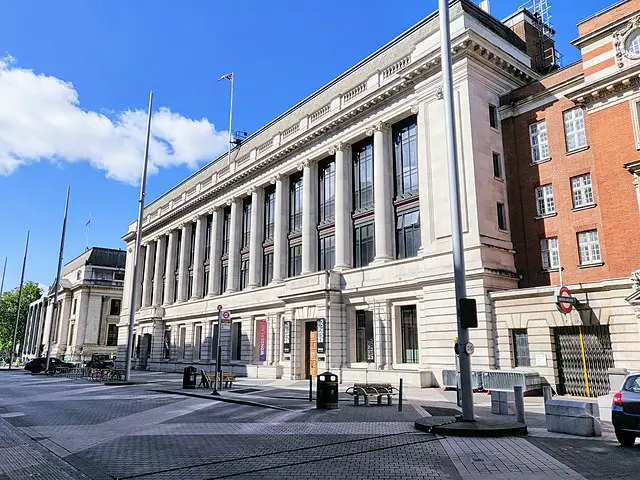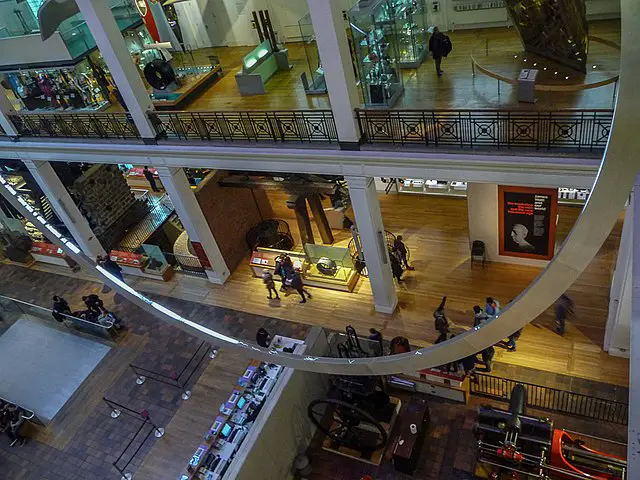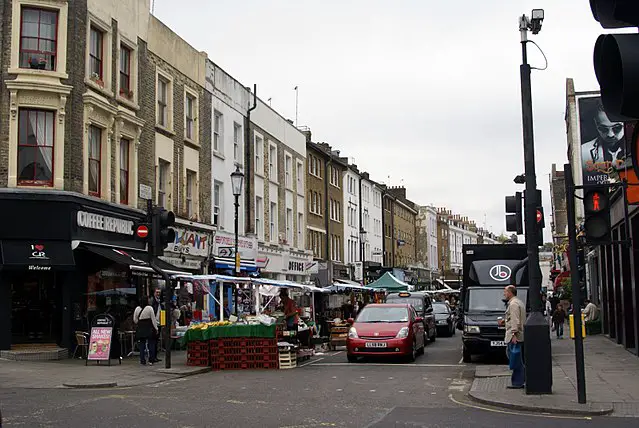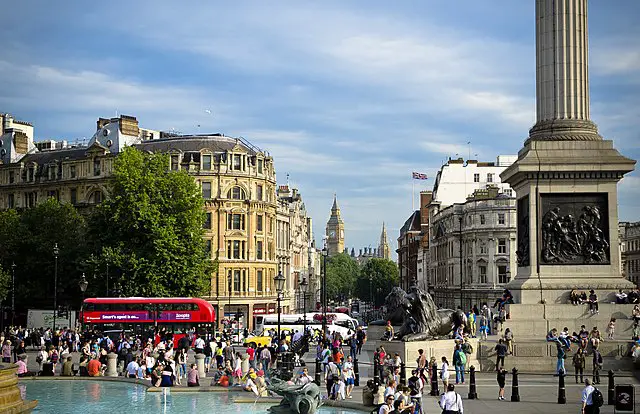

The Science Museum
Over 3 million people visit the Science Museum in London each year, and it has a collection of more than 300,000 objects. The oldest steam locomotive still in operation, some of the oldest steam engines still in use, the first jet engine ever built, a 10,000-year clock prototype, a reconstruction of the first model of DNA, and a whole lot more are among the notable objects. Along with an IMAX 3D theatre, there are other interactive exhibits that can be touched. There is something of interest for everyone at the Science Museum, which is organised into several galleries on seven levels and covers a wide range of topics, both past and futuristic. You might want to think about making it a museum day and visiting them while you’re in the area as this museum is situated on Exhibition Road next to both the Natural History Museum and the Victoria & Albert Museum. Since the Science Museum is a public institution, all of its ongoing exhibits are free to view, making it a fantastic destination to visit even on a tight travel budget. The IMAX 3D theatre, simulators, and special exhibitions have an admission fee.The museum is open every day but the weekend of December 24-26.
Portobello Road, which runs through the heart of West London’s ever-trendy Notting Hill neighbourhood, is known for everything from rows of antiques stalls, hip pubs, and Hugh Grant to sixties models, photographers, artists, and rockstars. (The movie “Notting Hill” did much to undermine Portobello’s cool factor, and it’s taken a while to get it back.) But what we’re talking about is Portobello Market, when the street is It’s that well-known. What are we likely to find or what do we need to search for? Portobello, which is well renowned for its antiques and antiquities, is actually a collection of marketplaces. At the Notting Hill end are the antique and bric-a-brac stalls and arcades; farther up are the food stalls, offering anything from conventional fruit and veg to organic biscuits, bratwurst, and crepes. On Fridays and Saturdays, vintage clothing vendors and up-and-coming designers set up shop close to the Portobello Green arcade beneath the Westway Flyover. The latter day is the busiest regardless of weather.




Leadenhall Market is a covered market in London that is situated on Gracechurch Street but also has access for cars via Whittington Avenue to the north and Lime Street to the south and east, as well as additional pedestrian access via several constrained alleyways. It is one of the oldest marketplaces in London and is situated in the City of London financial district’s historic core. Although this claim is debatable, the market was established in the 14th century and is claimed to have gotten its name from Leather-hall. The first mayor of Leaden Hall was Simon Eyre, who was elected in 1446. The Market mainly sells fresh food and is open from 10 am to 6 pm on weekdays. Cheesemongers, butchers, and florists are some of the market’s exhibitors. It was once a market for meat, game, and poultry and is now located in what was once the heart of Roman London. The market is also home to a number of commercial establishments, including clothing stores. Leadenhall Market is a popular tourist destination because of its elaborate roof structure, which is painted green, maroon, and cream, and cobblestone flooring. The current building was created in 1881 by Sir Horace Jones, who also designed Billingsgate and Smithfield Markets. Gracechurch Street serves as the market’s main entrance. In a 17th-century Dutch design, towering, narrow gablered red brick and Portland stone blocks surround the double-height entryway. The southernmost neighbouring buildings have a continuous store frontage that is broken up by slender pedestrian entries into the market.
For various events, Covent Garden serves as a cultural hub for London, drawing both visitors and residents. Previously a well-known marketplace, the location has been transformed into a shopping centre that is home to everything from high-end haute fashion to upcoming designers. The centre of this neighbourhood is comprised of the areas of Covent Garden surrounding this mall and its theatre district. Given the lively atmosphere and popularity with tourists, the neighbourhood may get overcrowded. Large-scale productions with well-known actors are presented at the Royal Opera House and Donmar Warehouse. This region, which is frequently referred to as the “West End,” is comparable to Broadway in New York. Some of the most important modern artists visit Somerset House, a venue for contemporary art. The Strand, the major street that runs through the neighbourhood, is lined with commercial establishments. Covent Garden is surprisingly liveable despite the excitement because it is largely peaceful and sober outside of this core. With its smaller streets and spacious residences, the area behind the Strand has a distinct old-fashioned London vibe. Many of such residences are family homes, although some of them have been divided into apartments.




Trafalgar Square
One of London’s most significant and lively squares, Trafalgar Square was created in 1830 to honour the British victory over the French and Spanish fleets during the Battle of Trafalgar. Nelson’s Column, constructed in 1843 in memory of Admiral Lord Nelson, who was shot and killed in action while serving as the head of the British forces during the battle of Trafalgar, stands in the middle of the square. The 145-foot (almost 50-meter)-tall marble column is topped with a statue of Lord Nelson and is guarded by four lions made from molten bronze .
Two imposing fountains that light up at night are in front of the National Gallery, which lies on the square’s north side. A number of famous figures, including George Washington, have sculptures in Trafalgar Square that were presented to the English by the State of Virginia.
Washington had sworn he would never again step foot on British soil, thus the statue is set on cement that was specially imported from the United States.Since 1947, Norway has sent London a fir to serve as a Christmas tree each year in Trafalgar Square as a thank you for Britain’s assistance during World War II. One of the busiest and most populated squares in London is Trafalgar Square. Locals and tourists now concentrate their social and political attention in this square.
London’s most renowned department store is called Harrods.It is situated in Knightsbridge on Brompton Road, close to Hyde Park. Charles Harrod founded a wholesale supermarket in 1834, moved to Brompton in 1849, and opened a store there, where the current department store is now. The shop grew in the years that followed by acquiring nearby homes and structures. Harrods was completely destroyed by fire in December 1883, but it was quickly rebuilt on a bigger scale. Mohamed Al Fayed, an Egyptian, purchased the department store in 1985 and sold it to Qatar Holdings in 2010. With statues, fountains, and halls decorated in various motifs, Harrods offers opulent decorating. The Egyptian hall is one of the floors with the most unexpected dcor. The two Diana, Princess of Wales, memorials are also worth viewing. Many visitors purchase modest trinkets like tea, teddy animals, chocolates, and other little souvenirs to give to their family and friends.






